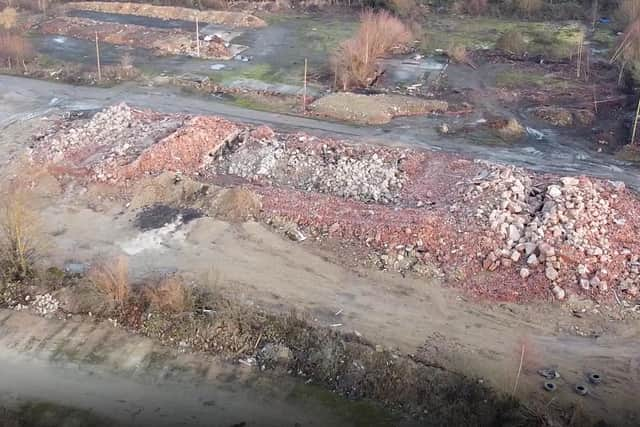Eerie drone footage captures rubble-filled former Firbeck Colliery site
and live on Freeview channel 276
Demolition of the large building - one of the last remaining still intact at the former pit which was closed in 1968 - began in October to pave way for 400 new homes.
Bassetlaw District Council approved plans by builder Keepmoat Homes for the development - including terraces, semi-detached and detached properties - in August last year.
Advertisement
Advertisement
Drone pilot Graham Truman, of The Flying Photographer, captured the footage with a small, non-professional machine he uses ‘just for fun’ while walking at the pit with his children.


He said: “I’ve been walking around the buildings there for years - you just expect the winding house to be there forever so I was shocked it had gone.
“I never thought a developer would want to spend the money clearing all the land.”
In the footage Graham’s Mavic 2 drone pauses above the massive pile of debris, focusing on the building’s still-visible outline before panning across nearby Langold and resting on the setting sun.
Advertisement
Advertisement
Dad-of-five Graham said: “I just thought it was really sad - but I suppose it couldn’t stay there forever.”
Speaking about the winding house demolition in October Langold man Chris Booth, 65, told how he had walked his dogs at the site every day since the 90s.
He said: “It’s always been an interesting place to photograph in terms of its industrial architecture and it’s a shame because it took about three years to build but only about 30 minutes to demolish.
“Apparently this was one of a very few winding houses left in the country with winding houses at either end and all the machinery in the middle.”
Advertisement
Advertisement
Father-of-four Chris said many in Langold had hoped the winding house could be restored and turned into accommodation.
However he added ‘I imagine that would have cost a lot of money’.
Chris said: “It’s just a sad day for everyone after it’s been there for so long - now it will be just another housing estate.”
The two shafts at Firbeck were sunk between 1923 and 1925.
By 1938 the colliery employed 1,457 underground workers and 357 surface workers.
